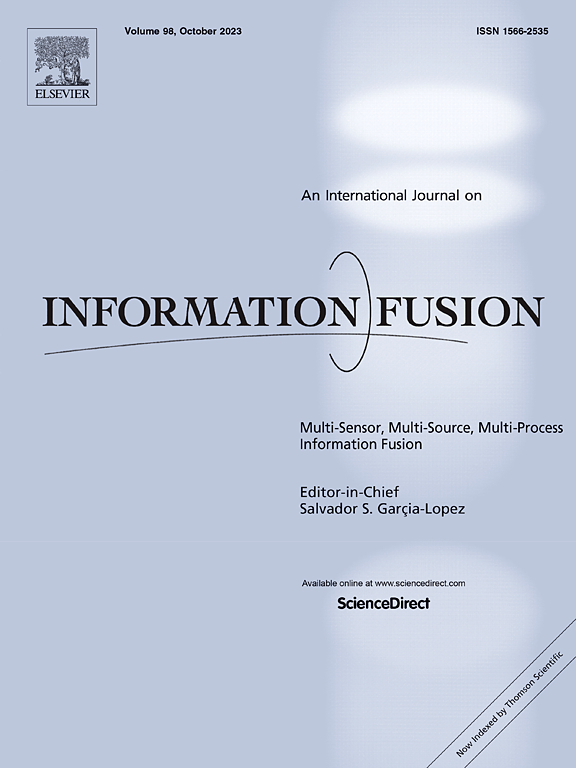Pseudo 5D hyperspectral light field for image semantic segmentation
IF 14.7
1区 计算机科学
Q1 COMPUTER SCIENCE, ARTIFICIAL INTELLIGENCE
引用次数: 0
Abstract
Light field (LF) encodes both intensity information and directional information of all light rays into high-dimensional signal, which facilitates various advanced applications due to its rich description. However, current mainstream research adopts two-plane parametrization to describe 4D LF, losing the information stored in the spectral dimension that can delineate more scene details. On this account, we introduce 5D hyperspectral light field (H-LF) to achieve robust semantic segmentation for the first time. To alleviate data redundancy while preserving useful information to a large extent, we use pseudo H-LF with sparsely non-repetitive angular-spectral distribution as an alternative and propose a network called PHLFNet. Specifically, our network successively performs feature-level angular-spectral joint blending and semantic-level angular-spectral joint enhancement to fully exploit the complementary information embedded in pseudo H-LF, in which the former executes preliminary information fusion and calibration across all modalities, and the latter distills unique semantic cues of each auxiliary modality to boost feature of segmented central view image. To guarantee the accuracy of semantic cues distillation, we design boundary consistency semantic label propagation to handle cross-spectral color inconsistency and cross-angular pixel misalignment in pseudo H-LF, thereby generating semantic labels of each auxiliary modality to provide supervision. Extensive experimental results illustrate that PHLFNet achieves outstanding performance compared with relevant state-of-the-art methods, demonstrating the significance of introducing H-LF for semantic segmentation.
用于图像语义分割的伪5D高光谱光场
光场(Light field, LF)将所有光线的强度信息和方向信息编码成高维信号,以其丰富的描述为各种高级应用提供了便利。然而,目前主流研究采用双平面参数化来描述4D LF,失去了光谱维度中存储的能够描绘更多场景细节的信息。为此,我们首次引入5D高光谱光场(H-LF)来实现鲁棒语义分割。为了减少数据冗余,同时在很大程度上保留有用信息,我们使用具有稀疏非重复角谱分布的伪H-LF作为替代方案,并提出了一种称为PHLFNet的网络。具体而言,我们的网络先后进行了特征级角谱联合混合和语义级角谱联合增强,充分利用了伪H-LF中嵌入的互补信息,其中前者对所有模态进行初步的信息融合和校准,后者提取每个辅助模态的独特语义线索,对分割的中心视图图像进行特征提升。为了保证语义线索蒸馏的准确性,我们设计了边界一致性语义标签传播来处理伪H-LF中的跨光谱颜色不一致和跨角度像素不对齐,从而生成每个辅助模态的语义标签来提供监督。大量的实验结果表明,PHLFNet与相关的最新方法相比取得了优异的性能,证明了引入H-LF进行语义分割的重要性。
本文章由计算机程序翻译,如有差异,请以英文原文为准。
求助全文
约1分钟内获得全文
求助全文
来源期刊

Information Fusion
工程技术-计算机:理论方法
CiteScore
33.20
自引率
4.30%
发文量
161
审稿时长
7.9 months
期刊介绍:
Information Fusion serves as a central platform for showcasing advancements in multi-sensor, multi-source, multi-process information fusion, fostering collaboration among diverse disciplines driving its progress. It is the leading outlet for sharing research and development in this field, focusing on architectures, algorithms, and applications. Papers dealing with fundamental theoretical analyses as well as those demonstrating their application to real-world problems will be welcome.
 求助内容:
求助内容: 应助结果提醒方式:
应助结果提醒方式:


